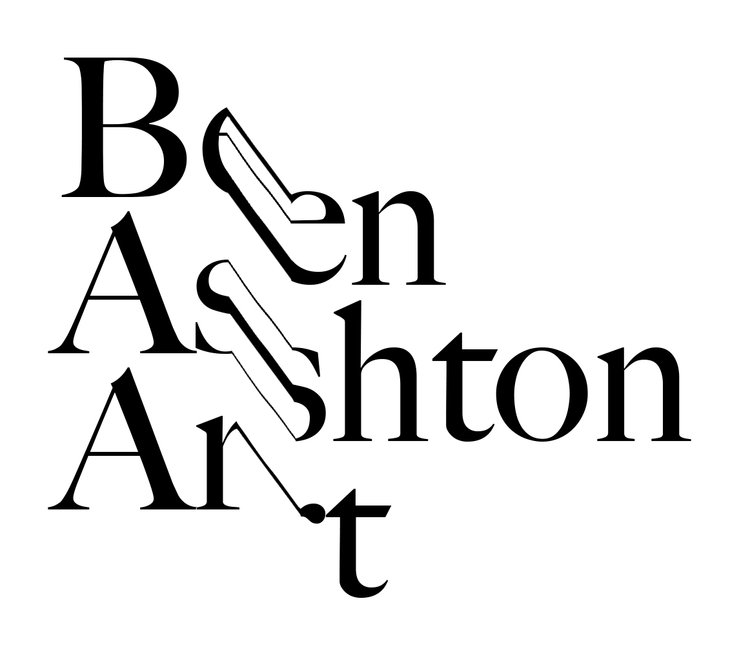CV/Exhibitions here.
Ben Ashton is a master of subversion. His art is both beautiful and challenging; a clash of past and future that merges classic techniques with new ideas. He has achieved a style that is at once instantly recognisable, universally relevant and completely personal.
Born in 1983 – to an artist father and a mother who led the creative department of a secondary school – he went on to study Fine Art at Newcastle University before completing his MA at the Slade School of Fine Art in London, in 2008.
Ashton has spent his life studying the Old Masters - he is unrelenting in his efforts to reach the pinnacle of his craft, painting each and every day, with the intent then to distort or even shatter something that has been perfected.
This has led to his current ‘To Our Glorious Future’ series, which focuses on the Regency era and the birth of the British Empire: “A period of time that spawned a huge amount of self-congratulatory portraiture which now lines the walls of our museums and institutions.”
Inspired by the “swagger portraits” of artists such as Thomas Lawrence, “those dandyish, silly-looking types”, Ashton offers a mirror to the pomposity of contemporary discourse. His current technique, too, is heavily influenced by Lawrence, many of whose portraits have an “unfinished” look. “You see the ground coat, then you see a few brush marks that outline the body, but the face is perfectly done,” he explains.
He works predominantly in oils on canvas or panel, but also uses paper. For the latter, he creates a thin wash that he layers over the paper, then mixes water and soap to disrupt the brush strokes. Over this, he makes tonal underdrawings with wax-based water-soluble bars, before beginning the painting process. “I’ve tried to become quicker and more visceral in my process over the years, and aim for immediacy as much as possible,” he says. His subjects attempt to mimic the confident poses of Regency-era portraits – that “master of the universe” look – yet the hues and patterns that surround them give the works a sense of chaos.
Everything you see in these paintings is Ashton’s work, right down to the costumes, often fashioned from salvaged material, drop-cloths, plastic bags and bin-liners. “I really find it fun, making these garbage costumes,” he says. “It sends the characters up even more when you’re aware that it’s all made out of trash.”
There is a touch of Mannerism in the way Ashton stretches the eyes and the facial features, but also in the elongated necks witnessed in “Leading the Blind” and “The Tutor’s Daughter”. It holds a mirror to the distortion taking place every day on social media – in the Instagram filters that slim noses and plump up lips, and in the professionally Photoshopped images that allow celebrities to cultivate an air of unattainable beauty.
While some might accuse Ashton of being “obsessed” with history (and he’d likely agree), his work is also deeply rooted in the future. As he points out, history tends to be cyclical, so by drawing on the past he is able to provide context to art that reacts to current events.
After studying his paintings, the viewer might also notice that Ashton tends to use the same small cast of subjects (himself and his immediate family). This was initially because it was the most economical approach, but over time, Ashton has come to view his work as a personal history. “Because I've painted myself and the people around me for so long… if you were to do a retrospective after I died then you'd be able to see my entire life in painting,” he says. “You'd see someone grow old.”
Oil paint is incredibly resilient, he adds. “I think that's what I really like about it. Portraiture has a strange lineage; it's been a part of humanity's means of expression for centuries.” This is the legacy – a wonderfully odd and unique one – that he will leave behind.
Roísín O’Connor

